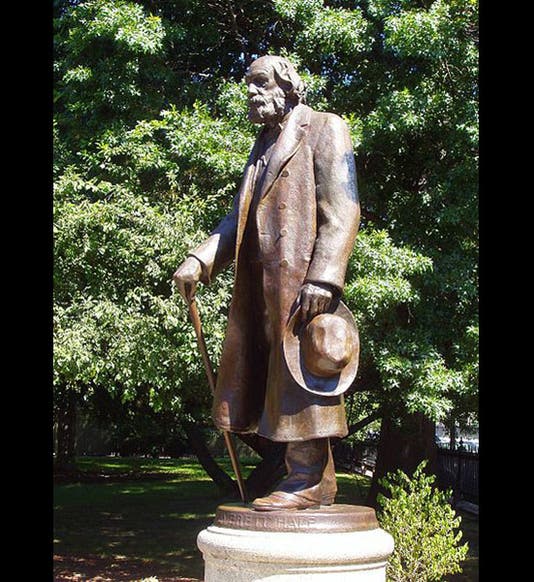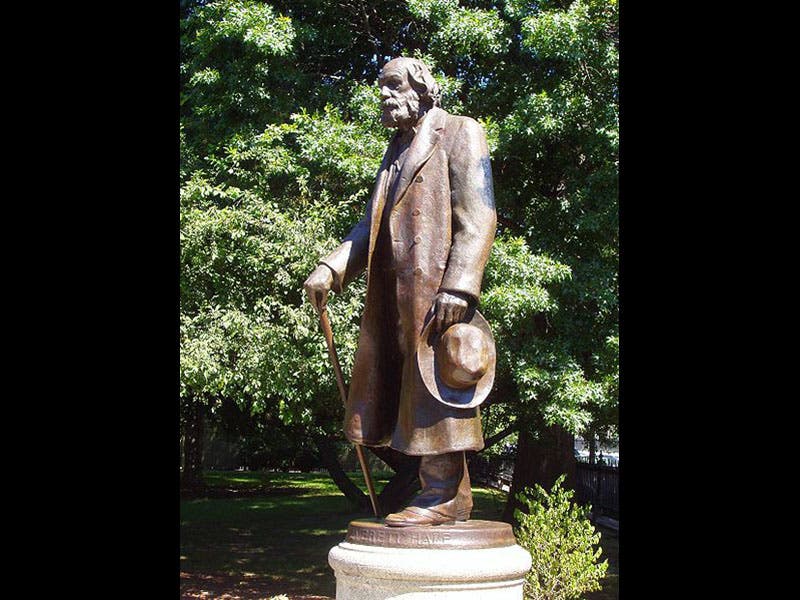Scientist of the Day - Edward Everett Hale
Edward Everett Hale, an American author, died June 10, 1909, at age 87. Hale was a prodigiously productive writer in the last half of the 19th century. Three of his occasional pieces seem worthy of mention in the scientific context of these blogs. In 1856, Hale published a piece called “The Last Voyage of the Resolute,” in which he was to first to set down the marvelous saga of HMS Resolute (see second image above), a Royal Navy ship that was frozen into the Arctic archipelago in 1854 and abandoned by her commander, and which then marvelously freed itself and drifted a thousand miles before being salvaged by an American whaler and brought back to New London, Connecticut. Little did Hale know, in 1856, that the Resolute would then be refurbished and returned to Queen Victoria, and that much later, when the Resolute was broken up, timber from her hull would be used to make the Resolute desk and given back to the United States, where it now sits in the Oval Office of the White House (third image). Hale published another story in the Atlantic Monthly in 1870-71, called "The Brick Moon," in which he was the first to propose the launching of an artificial satellite--he even beat Jules Verne to the punch here Finally, although it does not have much to do with science, we must mention Hale's most famous story, "The Man Without a Country" (1863). Most people know this sad saga of a man, Philip Nolan, who cursed his native land in court and was sentenced as a consequence to spend the rest of his life in exile on the high seas, forbidden not only to set foot ever again in the United States, but even to hear the name of his native country spoken aloud. Not everyone realizes that Philip Nolan was a fictional creation, an invented player in a tale of patriotism written in the early days of the Civil War to buttress the Union cause. Which is why we can show no image of Nolan, except a fictional one (fourth image). We can do better with Hale, who was unquestionably real. A bronze life-size statue of Hale stands in the Boston Public Garden (first image). Dr. William B. Ashworth, Jr., Consultant for the History of Science, Linda Hall Library and Associate Professor, Department of History, University of Missouri-Kansas City. Comments or corrections are welcome; please direct to ashworthw@umkc.edu.









![Using an astrolabe to measure the depth of a well, woodcut in Elucidatio fabricae vsusq[ue] astrolabii, by Johannes Stöffler, 1513 (Linda Hall Library)](https://assets-us-01.kc-usercontent.com:443/9dd25524-761a-000d-d79f-86a5086d4774/a998eb50-55d2-4a88-ace2-a50aa5fa86e7/Stoffler%201.jpg?w=210&h=210&auto=format&fit=crop)
